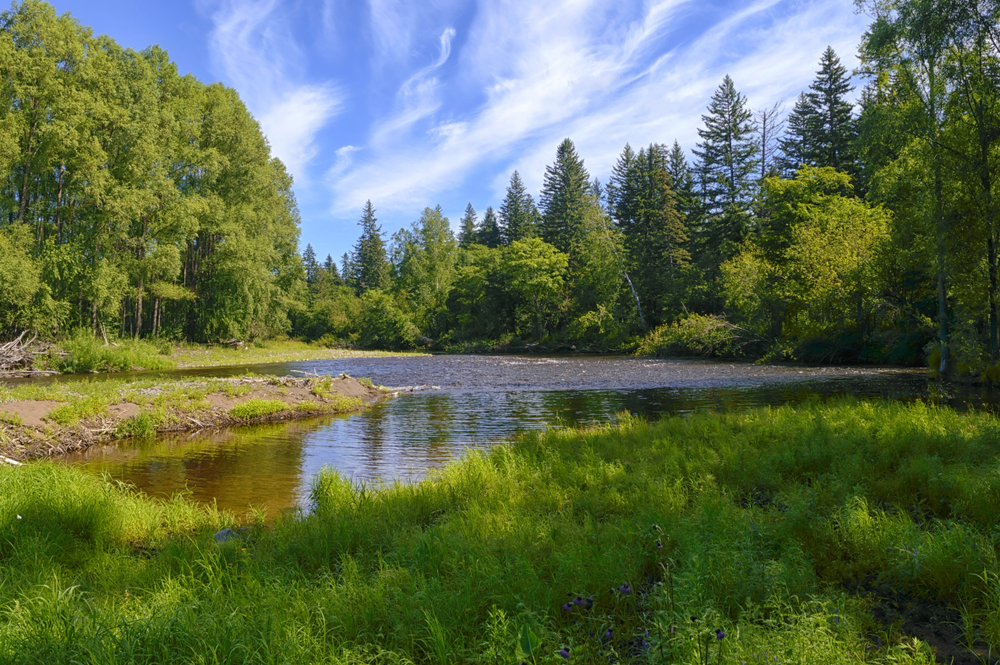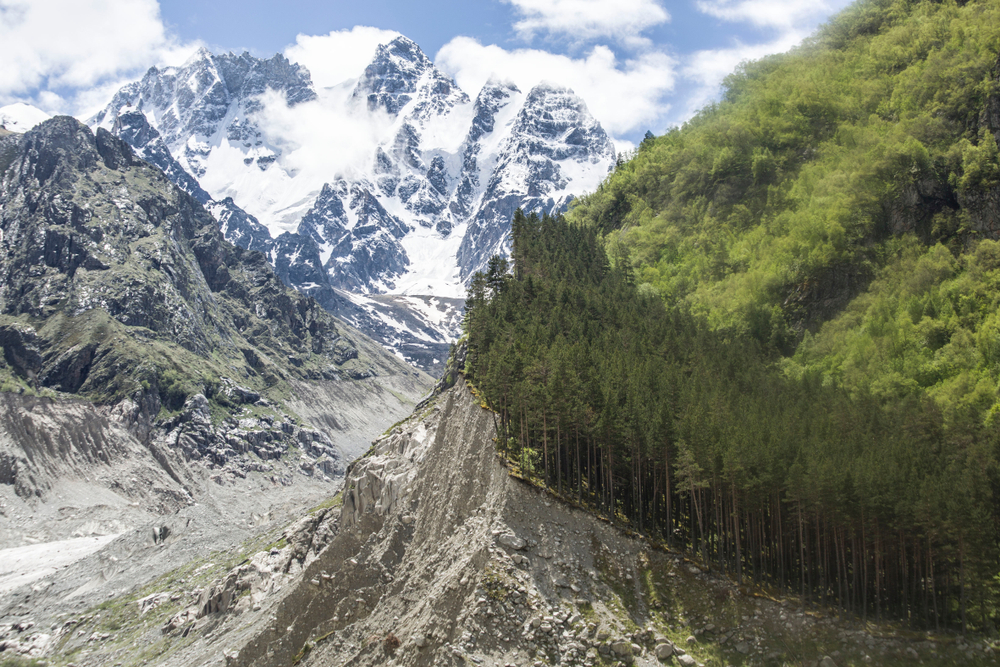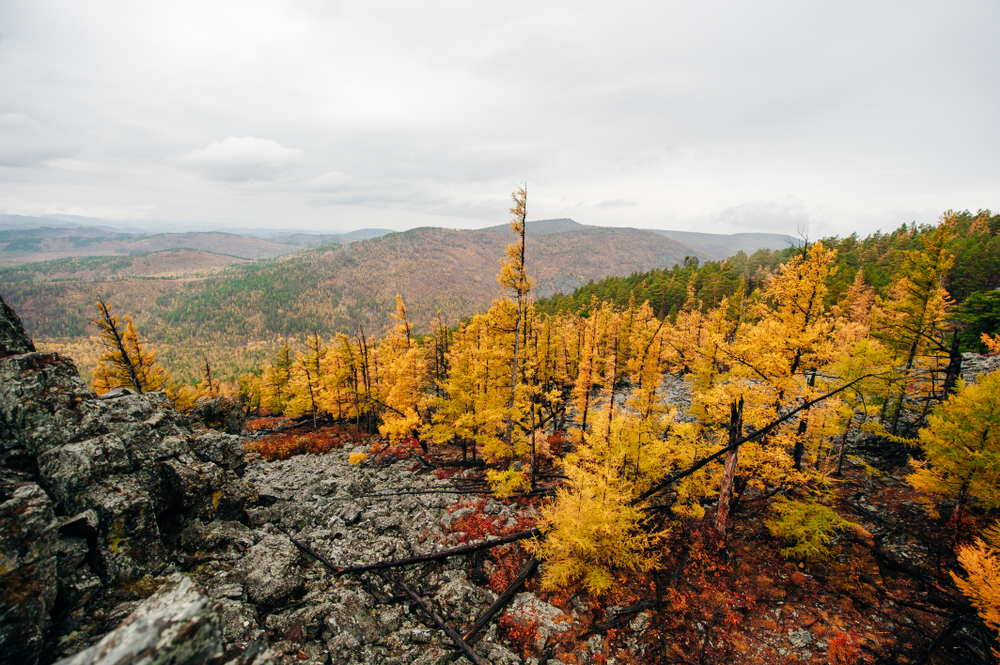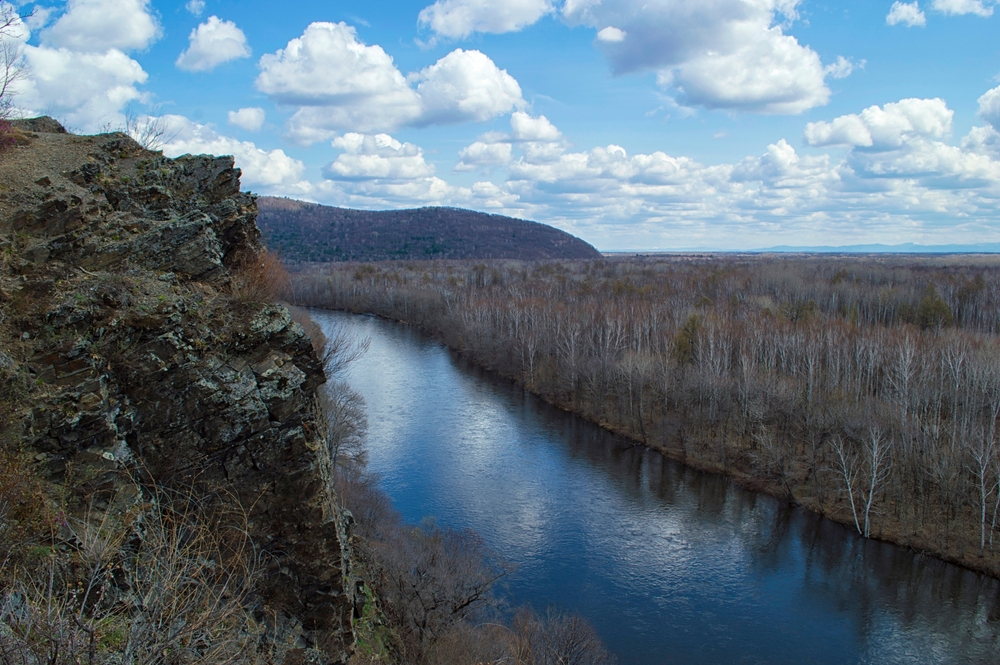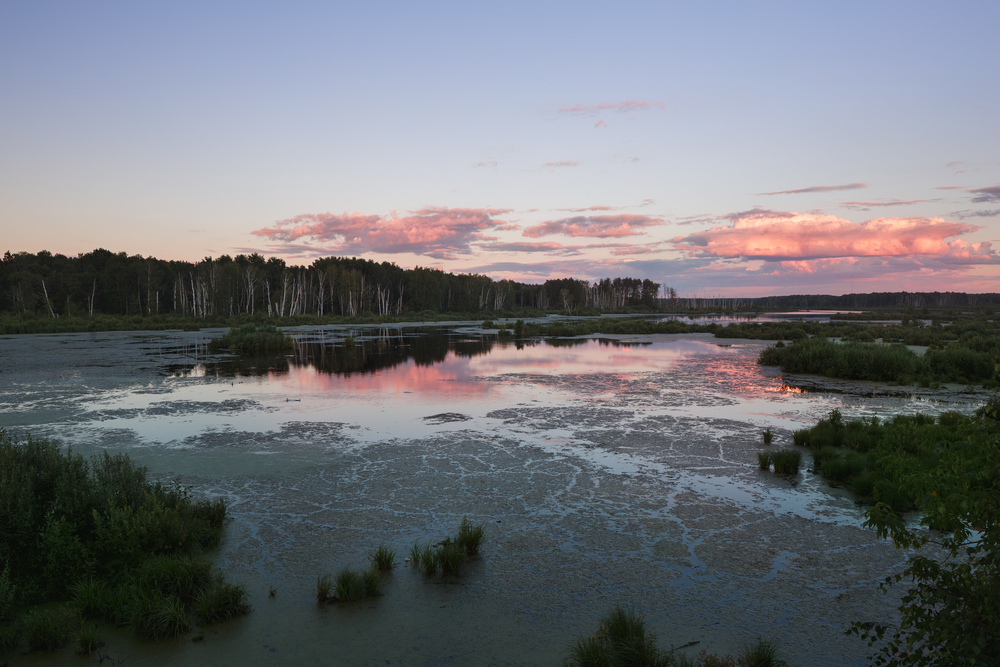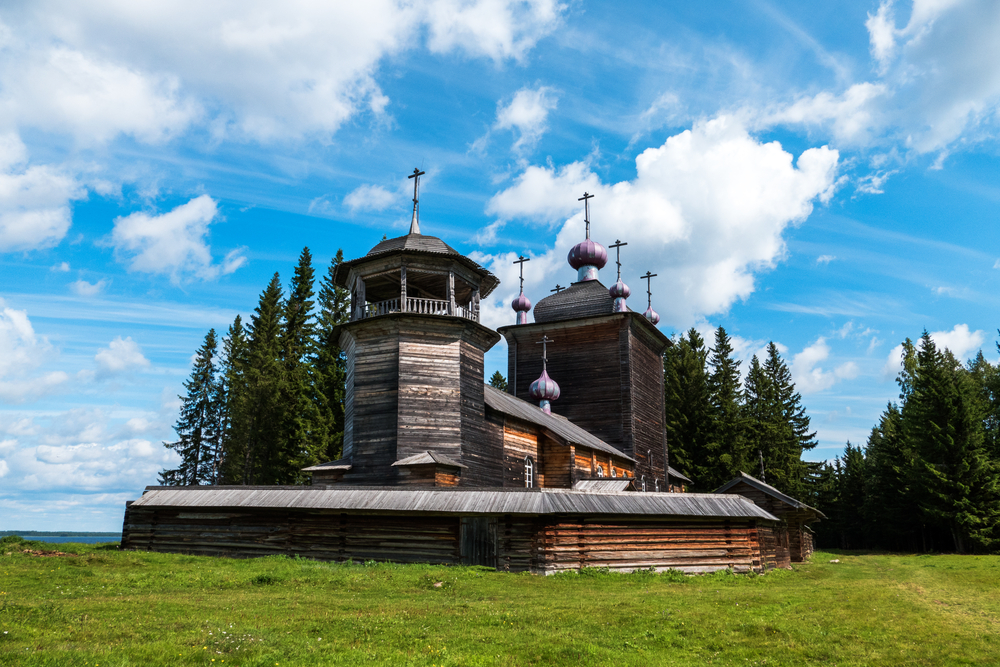Bikin Overview
Bikin National Park, known locally as Бикинский национальный парк, is a vast protected area in the Russian Far East, covering approximately 4,006 square miles (10,525 square kilometers).
Located in the Primorsky Krai region, it lies within the Sikhote-Alin mountain range and is part of the larger Ussuri taiga, one of the most well-preserved temperate forests in the world.
The park was established to safeguard the Bikin River Basin, often called the “Russian Amazon” due to its pristine wilderness and exceptional biodiversity. The park is crucial for preserving the traditional lands and culture of the Indigenous Udege people, who have lived in harmony with the forest for centuries.
The landscape of Bikin National Park is defined by dense, ancient mixed forests, rugged mountains, and the winding Bikin River, which serves as the lifeblood of the ecosystem. The terrain is dominated by old-growth Korean pine and Mongolian oak trees, which provide vital habitat and food sources for the park’s wildlife.
The lush valley floor transitions into steep, forested slopes and rocky peaks, with the highest elevations reaching approximately 5,000 feet (1,500 meters). This remote and largely untouched region experiences a humid continental climate, with cold winters and warm summers, making it a dynamic environment where seasonal changes dramatically influence the landscape.
Bikin National Park is one of the last strongholds of the critically endangered Amur tiger, the largest big cat in the world. The park provides an essential sanctuary for this elusive predator, with an estimated population of several dozen individuals roaming its vast forests. Other key mammal species include the Amur leopard cat, Himalayan black bear, Eurasian lynx, and Siberian roe deer.
The Korean pine forests sustain a thriving population of wild boar, Manchurian wapiti, and musk deer, which in turn support the Amur tiger. The park is also home to over 200 bird species, including the Blakiston’s fish owl, which is one of the world’s largest and rarest owls. Various migratory birds, such as the mandarin duck and the white-tailed eagle, can be seen along the riverbanks and wetlands.
One of the park’s most remarkable features is its status as one of the largest intact tracts of temperate forest in the world. The vast wilderness remains largely undisturbed by modern development, offering a unique glimpse into an ecosystem that has remained relatively unchanged for centuries.
The Bikin River itself is a major attraction, not only for its ecological significance but also for its role in Indigenous Udege culture, as they rely on it for fishing, transportation, and traditional hunting practices. The park’s rich biodiversity, combined with its cultural significance, makes it a rare gem in global conservation efforts.
Visitors to Bikin National Park can explore the area primarily through guided eco-tours, river expeditions, and wildlife tracking experiences. The best way to access the park is by boat along the Bikin River, which allows for deep immersion into the untouched forest.
Eco-tourism initiatives led by the local Udege people provide insight into their traditional way of life, including sustainable hunting techniques and the use of medicinal plants. Photographers and nature enthusiasts can embark on tiger-tracking expeditions, where expert guides help locate signs of the elusive predator while ensuring minimal disturbance to the wildlife.
Conservation efforts in Bikin National Park have been largely successful in protecting both the ecosystem and the cultural heritage of the Udege people. The park’s establishment was a major achievement in the global effort to preserve the Amur tiger’s habitat, preventing large-scale logging that once threatened the forest.
Strict anti-poaching measures and community-led conservation programs have contributed to a stable tiger population. However, ongoing challenges include illegal hunting and the need for sustainable economic alternatives for local communities.
Despite these pressures, Bikin National Park remains one of the most pristine natural landscapes in Russia, providing an invaluable refuge for wildlife and a living cultural landscape for Indigenous communities.








































































